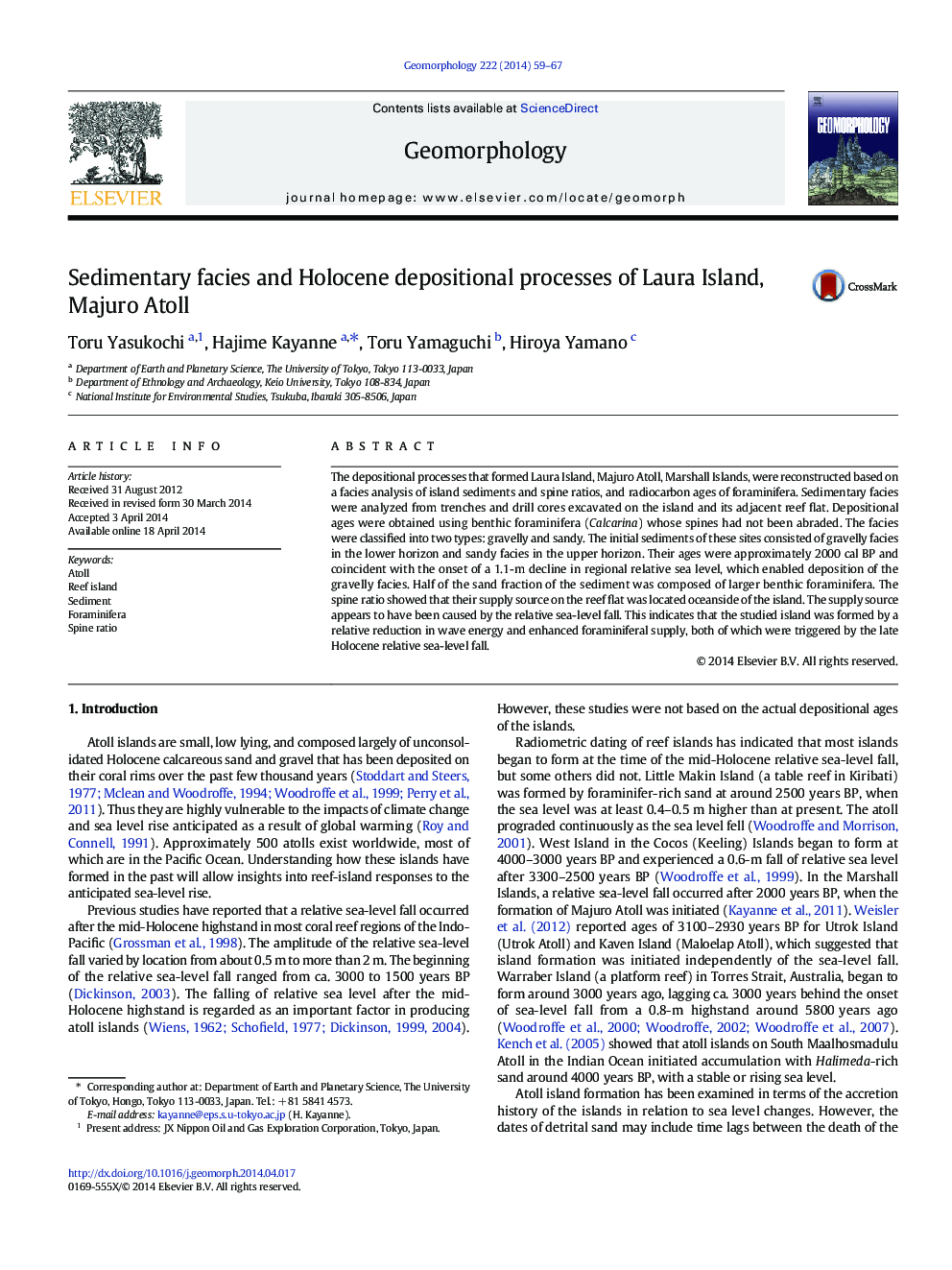| Article ID | Journal | Published Year | Pages | File Type |
|---|---|---|---|---|
| 6432411 | Geomorphology | 2014 | 9 Pages |
The depositional processes that formed Laura Island, Majuro Atoll, Marshall Islands, were reconstructed based on a facies analysis of island sediments and spine ratios, and radiocarbon ages of foraminifera. Sedimentary facies were analyzed from trenches and drill cores excavated on the island and its adjacent reef flat. Depositional ages were obtained using benthic foraminifera (Calcarina) whose spines had not been abraded. The facies were classified into two types: gravelly and sandy. The initial sediments of these sites consisted of gravelly facies in the lower horizon and sandy facies in the upper horizon. Their ages were approximately 2000Â cal BP and coincident with the onset of a 1.1-m decline in regional relative sea level, which enabled deposition of the gravelly facies. Half of the sand fraction of the sediment was composed of larger benthic foraminifera. The spine ratio showed that their supply source on the reef flat was located oceanside of the island. The supply source appears to have been caused by the relative sea-level fall. This indicates that the studied island was formed by a relative reduction in wave energy and enhanced foraminiferal supply, both of which were triggered by the late Holocene relative sea-level fall.
